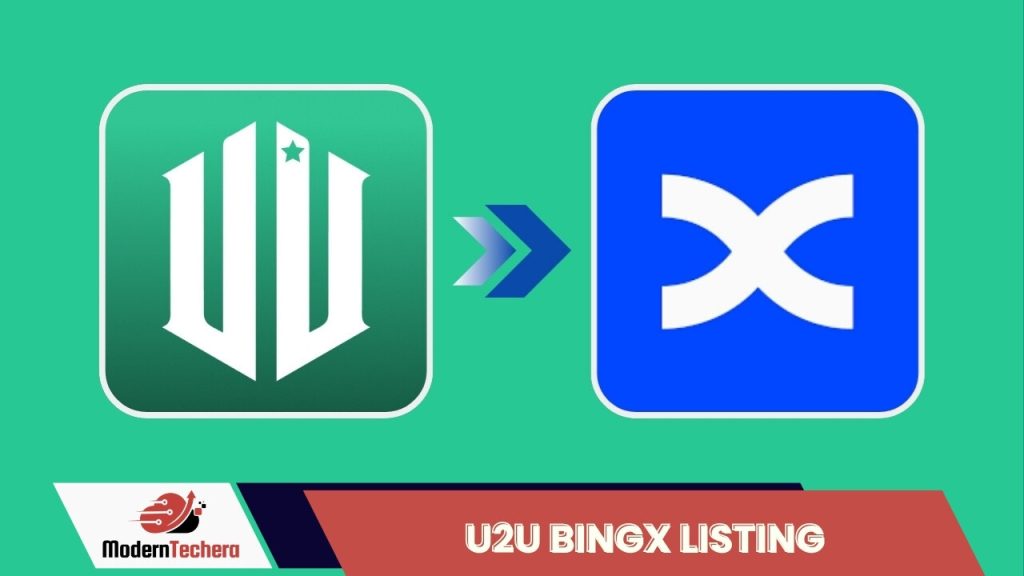Selecting the right RPA vendor for your business needs is like setting a navigator for a cross-country road trip. Choose wrong, and you’re in for detours and headaches. Do it right, and you’re cruising to success with ease. You need a partner that not only gets your current demands but also gears up for future challenges. That’s why understanding your automation goals comes first. You must pinpoint the exact processes begging for a bot’s touch and the results you’re after. Next up, you’re weighing options, checking who’s who in the RPA game, and sizing them against your unique criteria. But it’s not just about who fits the bill now—it’s about who brings the most bang for your buck while adapting as you grow. Finally, you’re strapping in for the long haul, mapping out the ride from ‘Go Live!’ to a thriving, bot-boosted future. Ready to roll out a smooth RPA journey? Let’s dive in.
Understanding Your Automation Needs and Setting Clear Objectives
Defining Business Processes for RPA Implementation
Before you pick an RPA tool, know what tasks you need it for. Let’s sit down and think. Ask yourself, “What tasks take up most of my time?” Now, picture bots doing those for you. You want to jot down each step these tasks need. This is key to seeing how RPA fits in. Look for tasks that are clear-cut and repeat often. These are sure bets for RPA to do well.
Once you list these tasks, think about the “how.” How can RPA make these tasks fly? Imagine a bot that reads forms and enters data without breaks. This could be what you need. This is how we start to see which RPA tool will be our work buddy. It’s about getting the right match—like puzzle pieces that fit just right.
Establishing Desired Outcomes for RPA Integration
Now, let’s set some goals. Ask, “What wins am I after with RPA?” Maybe you want to see tasks done faster. Or maybe you want fewer mistakes. Or you might want your team to focus on cool, new ideas instead. These goals help you see which RPA tool will bring the goods.
For example, if speed is what you’re after, look for RPA that works fast. If cutting errors is your aim, find a bot that’s sharp and doesn’t overlook details. By knowing your endgame, picking the right RPA becomes a piece of cake.
It’s like when you play a video game. You know the mission, and you pick the tool that gets you there. Same deal here with RPA. The bot you choose has to match the quest you’re on.
You’ll also want to eye the future. Think about where your business is headed. Ask, “Will this RPA tool grow with me?” You don’t want a bot that can’t keep up down the road. A bit of thinking ahead can save headaches later.
It boils down to this: knowing your needs and goals puts you in charge. You’ll be able to sift through the RPA crowd and flag down the one that’s waving at you, saying, “Pick me, I’m your star player!” And with that star player on your team, you’re set to score big.

Evaluating RPA Vendor Capabilities and Solutions
RPA Solution Providers Comparison
When looking for RPA tools, start with a solid comparison. This means laying out what each vendor offers. How? Look at features, user reviews, and how well they fit your industry. Making charts can help spot differences.
What matters in RPA software? Think of your business needs first. Do you need it to scale as you grow? Should it connect easily with systems you already use? Will you need help from the vendor along the way?
RPA Vendor Evaluation Criteria
Deciding on a vendor calls for careful thinking. Ask, does the RPA software do what you need without a fuss? Can it grow with your company? Is it safe to use? Will the vendor be there when you need help?
Cost matters, but think of value too. Spending less now might mean spending more later if the tool can’t keep up. Think about time also — how long to get things running smoothly?
Every industry has its puzzles. Does the RPA tool work well in yours? It should make your work easier, not trickier. A good RPA tool must fit snugly into your current setup.
Support is key. Will the vendor train your team? How quick can they fix issues if they come up? Look for vendors with good track records.
In the end, it’s about more than just buying software. It’s about picking a partner that will back you up as you use automation to make your business run smarter, not harder.

Analyzing Vendor Offerings for Best Fit and Value
Cost-Benefit Analysis of RPA Vendors
When picking an RPA vendor, think about costs versus gains. Look for value, not just cheap options. Ask, what benefits does each RPA solution offer for its price? Vendors should help cut your costs and boost your profits at the same time.
Let’s break it down. Cost-benefit analysis is meant to figure out if what you spend on RPA will pay off. You will compare all the expenses and savings. Costs may include the price of software, setup, and staff training. Benefits are often in the form of time saved, less mistakes, and more work done. Remember, good RPA not only cuts costs but also creates opportunities to earn more.
A neat feature some vendors offer is a free trial of their RPA software. This lets you try before you buy, ensuring the RPA tools fit well with your business processes. Trials can give an early look into how an RPA tool would work for you in real life.
To make the best choice, gather info, ask the right questions, and see how the numbers stack up. You can find handy tools online to help with this step. They let you plug in your own numbers to see possible savings and returns.

Scalability and Customization Options
Think long-term when picking an RPA vendor for your business. Check if it can grow with your needs. You might start small, but your RPA system must handle more work as you grow. Can the vendor’s software be fine-tuned to meet your unique business needs? This is crucial to get right.
Scalability means the vendor’s software can handle growing amounts of work smoothly. Customization means changing the software to match how you work. This can include making special features just for you or making sure the software can talk to other systems you already use.
Good vendors understand that each business is different. They offer RPA tools that you can tailor to your processes. They also make it easy to add more robots or functions when needed. This is what we call scaling business with RPA. Your automation should become stronger as your business grows.
Always read customer reviews of RPA vendor services. These give a real-life look at how the tools perform and adapt. Find reviews that talk about both today’s use and how the software grew with the company’s needs.
When checking out vendors, ask:
- Can their RPA integrate well with systems you currently use?
- Do they offer strong support both now and in the future?
- What is their track record for updates and keeping up with tech?
In closing, look for an RPA solution that can scale and change with you. Stay focused on vendors that offer the best mix of value and future-proof features. Choose well, and your business will thank you with better work and more bucks in the bank.
Planning for Implementation and Long-term Success
RPA Implementation Strategies
When we look for ways to build a smart business, we often think about robots. Not the ‘take over the world’ kind, but Robotic Process Automation (RPA) tools. They help us work better and faster. To start, we must hatch a solid plan for RPA implementation strategies. This is the blueprint to make sure your robot helpers do what you need.
First, know what you want to automate. Is it sorting emails? Handling orders? Once you know, pick the RPA software that fits. It should be a tool that can grow with you. Think of it as picking a puppy. You want one that learns fast and can grow with your family. Not all RPA tools are the same. Some are best for small tasks. Others can handle big jobs.
Next, make sure your people are ready. This means training them to work with new robot teammates. You need a crew that can take on new tech with gusto. And trust me, it’s worth it. They’ll be the ones steering the ship while the RPA tools do the heavy lifting.
Last, work out a time frame to get your RPA up and running. Rushing leads to mistakes. So, take it slow. Plan milestones to check how things are going. It’s like building a model plane. You have to put each piece in the right spot. It takes time, but in the end, you get something great.
Remember, the goal is to boost business through automation. This means being smart about how you use RPA from day one.
Cultivating Long-term RPA Vendor Partnerships
Staying with a vendor is like growing a garden. You don’t plant seeds and leave. You water them, give them sunshine. In time, they give back with fruits or flowers. Same goes for your RPA vendor. You want to pick one that will bloom with your business.
Building a good relationship with your vendor is key. Be clear about what you need. Talk to them often. If bumps come up, work it out together. Think of them as your garden buddy. They can give advice on what your RPA needs to thrive.
Look into the vendor’s track record, too. Have they stayed ahead of tech trends? Do they keep their promises? This is like checking the weather before you plant. You want the best conditions for success.
Don’t forget about support services. Good support is like good soil. It can make a big difference in how your RPA grows. Some vendors even offer training. This helps your team learn how to ‘speak robot,’ making work smoother for everyone.
Always think ahead. Plan for how your RPA will change as your business does. Can your vendor keep up? This is like picking plants that fit your climate. You want RPA tools that can stand changes, be it a growth spurt in your company or new tech coming in.
To wrap up, picking the right RPA vendor is a big deal. It’s about finding one that can walk with you as your business evolves. Take the time to get it right. Ask the right questions. And build a strong partnership. This way, your business doesn’t just grow. It thrives—with your RPA tools as a big part of that success.
To wrap it up, we’ve walked through how to gear up your business for successful automation with RPA. We started by nailing down what your business needs and the goals you aim to hit. Then, you learned how to size up the tech firms that offer RPA and to pick the right one. It’s all about getting good value and making sure they can grow with you. Lastly, we talked about kicking off the automation in your work and keeping a strong tie with the RPA provider for years to come.
In the end, RPA can be a game-changer for your business. But it’s not just about the tech—it’s about the smarts you put into choosing and using it right. Stick to these steps for a smooth ride into the automation future. Your future self will thank you for the time and effort saved!
Q&A :
What are the key factors to consider when selecting an RPA vendor for your business?
When choosing the right RPA (Robotic Process Automation) vendor for your business, it is essential to evaluate various critical factors to ensure a successful partnership. These include the vendor’s technological capabilities, scalability of the solution, integration with existing systems, the level of customer support offered, the vendor’s track record and industry reputation, as well as the cost and ROI (Return on Investment) of the RPA solution. Additionally, assess the security features, compliance with regulations, and the vendor’s commitment to innovation and updates.
How do you evaluate an RPA vendor’s capabilities and compatibility with your business processes?
To ensure an RPA vendor’s capabilities align with your business processes, start by reviewing their case studies, client testimonials, and proof of concepts that demonstrate their expertise in your specific industry. Ask for a demonstration of their software to get a hands-on feel for how it works. It’s also important to inquire about the level of customization available and whether their RPA tools can seamlessly integrate with your existing IT infrastructure. Make sure that the RPA solutions offered are flexible and can adapt to evolving business processes.
What are the best practices for implementing RPA solutions from a vendor effectively?
Best practices for implementing RPA solutions from a vendor include starting with a clear understanding of your business objectives and the processes you wish to automate. Conduct a thorough vendor evaluation and choose one that aligns with your goals and offers reliable customer support. It is advisable to start small with a pilot program before scaling up. Ensure that there is a structured process for managing changes, and provide adequate training for your team. Collaboration between IT and business operations is critical, and having a governance framework in place can help manage risks and ensure compliance.
Why is customer support and service level important when selecting an RPA vendor?
Customer support and service levels are crucial when selecting an RPA vendor because they determine how quickly and efficiently any issues or challenges will be addressed post-deployment. A vendor with strong customer support can significantly reduce downtime and ensure your RPA deployment continues to operate effectively. This support also aids in troubleshooting, regular maintenance, and updates. The service level agreement (SLA) should clearly outline the vendor’s response times, availability, and the support channels provided, ensuring they meet your business requirements.
How does the scalability of an RPA solution influence the vendor selection process?
Scalability is an essential criterion in the vendor selection process because it dictates how well the RPA solution can grow alongside your business. An RPA tool must be able to handle increased workloads and be flexible enough to adapt to new processes and changes in the business environment. A scalable solution ensures that initial investments are protected and that the business can expand RPA use without the need for significant additional investments. When selecting a vendor, look for those that offer RPA solutions capable of scaling both in terms of the number of robots and complexity of tasks.



